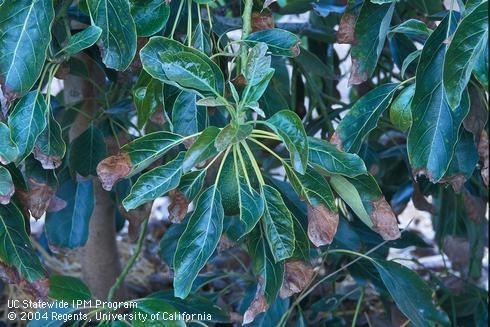Especially when there are no winter rains to leach accumulated salts from the root zone of trees, there is major concern about increasing the levels of salts going into the root zone. Chlorides, boron, sodium and total salts all should be minimized as much as possible in order to optimize tree production and health. Evaluating the fertilizer and irrigation management programs is important and in doing so, finding out how much is being put into the orchard.
A wonderful way to evaluate what is being applied through the irrigation system is to go online to AvocadoSource (avocadosource.com) and go to the ‘Tools' section and click on the ‘Irrigation Water Mineral Content Calculator'. Once there click on ‘Retrieve District Water Analysis Data' and there are several water qualities that can be downloaded onto the calculator.
I chose one of the Metropolitan Water District sources – Castaic Lake – which is representative of water delivered to the south from northern California. It shows a chloride level of 81 mg/L (81 ppm) which translates to 220 pounds of chloride for every acre-foot of water. Which means about 440 pounds of chloride per acre (about 2 ac-ft/ac) to grow avocado and citrus in Fillmore. And the same water coming out of Lake Skinner further south but nearly the same quality as Castaic, would be 880 pounds of chloride per acre in Fallbrook (4 ac-ft/ac).
So the question comes up about the use of potassium fertilizers. Citrus and avocado haul off about twice the potassium in their fruit as nitrogen. A typical harvest for either crop is about 50 pounds of K per acre – more fruit, more K. So to apply potassium, a grower can use several different materials – KMag, potassium thiosulfate, potassium sulfate, potassium nitrate, potassium chloride. A 100 pounds of either potassium sulfate or chloride put on about the same amount of potassium, 50 pounds. With the potassium chloride or course, there is 50 pounds of chloride.
The cheapest source of K is potassium chloride, but growers are concerned about the added chloride. The material is highly soluble and is easily injectable. It also is rapidly moved through the soil, so when it is injected through the irrigation in small amounts, the chloride tends not to accumulate in the root zone. So looking at the total amount of chloride that is applied in our normal irrigation waters, the chloride in the fertilizer doesn't represent a large proportion of the total chloride the tree sees. It could be considered in a fertilizer program, or at least a supplement to other sources of potassium.
Potassium is relatively immobile in soil, more so with more clay. Chloride on the other hand is quite mobile. It goes wherever the water goes. Applying it any time of the year basically results in its staying there until it is taken up or the soil is washed away. So applying potassium chloride in a wetter time of year, could be a cheap way to get potassium on with the least effect of chloride. Or potassium chloride could be applied in rotation with more expensive forms of potassium, such as potassium thiosulfate (KTS).
By the way, that Castaic water would contain 87 ppm sulfate and 74 ppm sodium which would mean over 200 pounds per ac-ft in the water and 110 ppm bicarbonates. The pH would be around 7.8. And this is good water by southern California standards. Many of the well water in southern California have much lower qualities than these waters from norther California and we get good yields from them. We have learned to use some pretty awful waters to grow crops here.
Attached Images:
